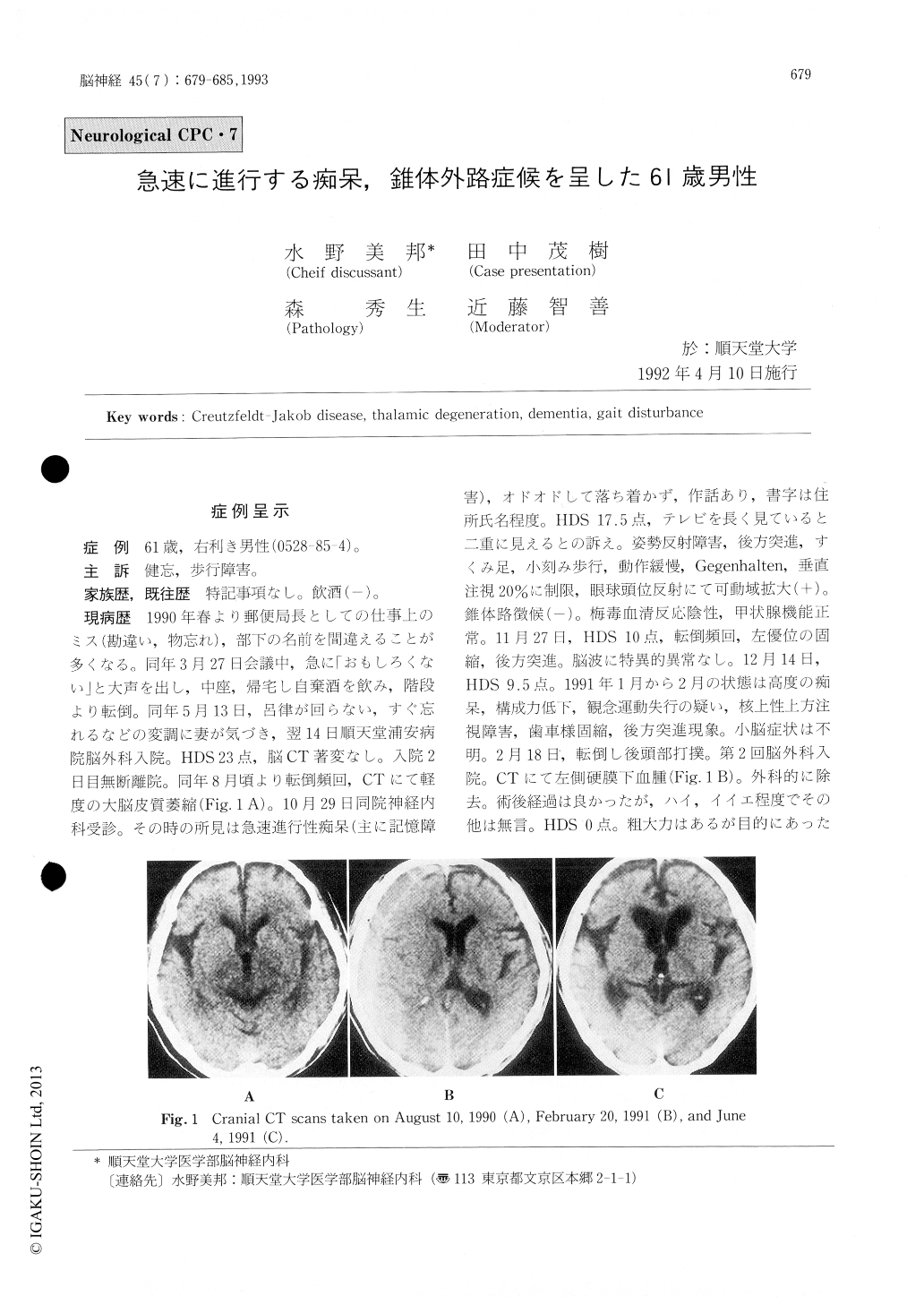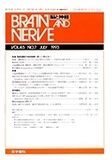Japanese
English
- 有料閲覧
- Abstract 文献概要
- 1ページ目 Look Inside
症例呈示
症例 61歳,右利き男性(052885-4)。
主訴 健忘,歩行障害。
We report a 61-year-old male with rapidly progressive dementia and gait disturbance.
He was well until spring 1990 as a postmaster, when there was an onset of memory disturbance and mistakes in his job. In May 1990, his wife noted slurring of his speech. In August, there was an onset of gait disturbance. He fell down frequently. In October, he was seen by a neurologist, who found moderate dementia, small step gait, retropulsion, freezing, paratonic rigidity, bradykinesia and a restriction in the vertical gaze on him. His dementia and gait disturbance progressed rapidly and in May 1991, he developed fever and dyspnea and was admitted to Juntendo University Urayasu Hospital.
On admission, he was chronically ill and wheezing rale was heard on both lung fields. Neurologically, he was awake but without response to the simplest examiner's command. Cranial nerves appeared intact except for a restriction in the upward gaze. His posture was opisthotonic with a decorticated posture. Marked rigidity was present in all four limbs. He could not sit or stand. Deep reflexes were diminished symmetrically. He was treated by supportive cares, however, he expired 12 days after his admission. In no time myoclonus was observed, nor PSD recorded in his EEG. Cranial CT scans revealed moderate cortical atrophy.
The patient was discussed in a neurological CPC, and the chief discussant arrived at the conclusion that he had Creutzfeldt-Jakob disease despite the absence of myoclonus and PSD.
Postmortem examination revealed diffuse spongy state of the cerebral hemisphere as well as striatum. The ventrolateral nucleus of thalamus showed marked neuronal loss and gliosis without spongy state. The cerebellar granular cell layer showed neuronal loss and astrocytosis. In addition, Kuru plaques were found in the granular cell layer as well as in the frontal cortex.
This case appeared unique in that neither myoclonus nor PSD were noted clinically, still the postmortem examination was typical spongiform encephalopathy consistent with CJD. In addition, marked degenerative change in the thalamus and Kuru plaques in the cerebellum reminiscent of Gerstmann-Straüssler syndrome were also noted in this case.

Copyright © 1993, Igaku-Shoin Ltd. All rights reserved.


